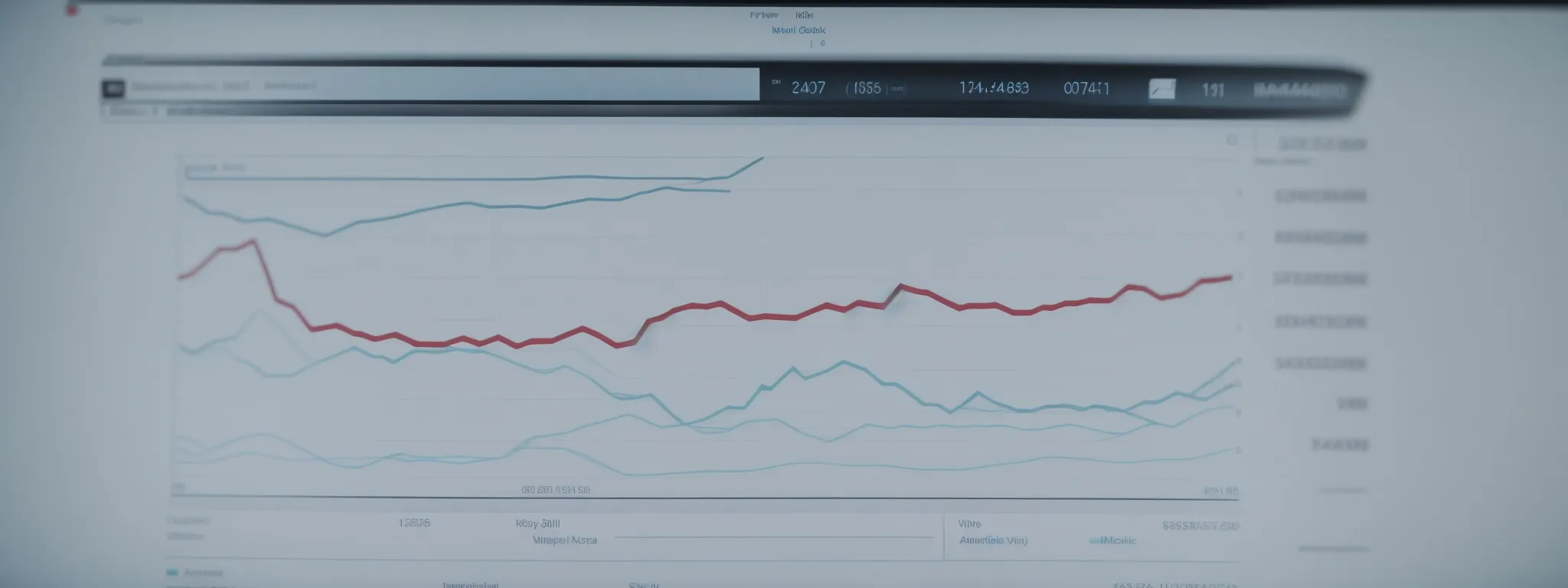Google— HTTP 3 Doesn’t Impact SEO
Google Clarifies: HTTP/3 Protocol Has No Effect on SEO Ranking As webmasters and SEO professionals keep a vigilant eye on Google’s evolving algorithms, the recent industry buzz […]
Google Clarifies: HTTP/3 Protocol Has No Effect on SEO Ranking
As webmasters and SEO professionals keep a vigilant eye on Google’s evolving algorithms, the recent industry buzz about HTTP/3 naturally raises questions about its impact on SEO rankings.
Amidst the swirl of conjecture, Google’s John Mueller has stepped forward with clarifications, separating fact from fiction regarding the latest iteration of the HyperText Transfer Protocol.
Although HTTP/3 introduces remarkable improvements in internet efficiency and speed through QUIC, it does not, by Google’s account, directly affect search positioning.
Understanding these developments is key for anyone aiming to optimize their web presence in alignment with the Internet Engineering Task Force’s standards.
Keep reading to unearth Google’s insights and learn how LinkGraph leverages time-tested SEO strategies that go beyond protocol updates.
Key Takeaways
- HTTP/3 Enhances Web Performance Through Increased Speed and Built-in Encryption but Does Not Directly Affect SEO Rankings
- Google Emphasizes That Quality Content, Mobile-Friendliness, and Good User Experience Remain Vital for SEO
- Adopting HTTP/3 Can Indirectly Benefit SEO by Improving User Experience and Satisfaction, Which Are Key to Customer Loyalty
- Protocol Updates Like HTTP/3 Should Not Overshadow the Core Elements of a Robust SEO Strategy
- Webmasters Can Integrate HTTP/3 Without Impacting Their Ongoing SEO Efforts, Focusing Instead on Content and Usability
Understanding the Basics of HTTP/3 and SEO

Embarking on a quest for prominent search engine rankings propels a user to reconcile with the multifaceted elements of SEO.
Amidst this intricate mix lies the significance of protocols which, while seemingly technical, have the potential to influence online experiences profoundly.
HTTP/3 emerges as a commendable advancement, promising to streamline interactions between browsers and servers with its novel approach to data transport.
As SEO professionals dissect the implications of emerging technologies, the exploration of HTTP/3’s mechanics and its intersection with SEO essentials becomes paramount.
This comprehension allows for a granular understanding of whether such protocols play a pivotal role in the nuanced dance of optimizing for search engines.
What Is HTTP/3 and How Does It Work
HTTP/3, the latest version of the Hypertext Transfer Protocol initiated by the Internet Engineering Task Force, represents an evolution in the way web data is conveyed. This protocol leverages the QUIC (Quick UDP Internet Connections) transport layer network protocol, which reduces connection establishment times and improves congestion management when compared to its predecessors.
At its core, HTTP/3 is engineered to enhance user experience on the internet by addressing latency issues that impact website loading speeds and interaction. Through the deployment of QUIC, HTTP/3 facilitates faster, more reliable communication between the user’s browser and the server, precipitating a noticeable improvement in web performance:
- Accelerates the negotiation process for quicker data transfers.
- Integrates encryption by default for elevated security in transit.
- Optimizes packet loss responses for uninterrupted browsing.
SEO Fundamentals and the Role of Protocols
Delving into The Realm of Search Engine Optimization (SEO), experts discern protocols as foundational components that uphold the architecture of internet communication. While they may not directly tip the scales in search engine algorithms, protocols like HTTP/3 display a propensity to enhance site performance—a factor that indirectly touches upon SEO by improving user experience, which search engines like Google increasingly prioritize.
In the ongoing endeavor to elevate search rankings, SEO strategists recognize that the immaculate operation of protocols underlies the seamless interaction between search engine bots and web content. Though John Mueller of Google has clarified that the adoption of HTTP/3 does not shift search ranking in isolation, the implementation of such protocols, when synchronized with other SEO practices, contributes to A Robust SEO Framework That Benefits the End-User.
Google’s Official Statement on HTTP/3 and SEO Rankings

In a digitally dominated era where every millisecond counts towards creating seamless online experiences, the SEO community closely observes the continual guidance from industry leaders.
A recent development saw John Mueller of Google delineating the relationship between the HTTP/3 protocol and its bearing on search engine rankings.
This deliberative pronouncement has echoed through the corridors of digital marketing, compelling webmasters and SEO experts to scrutinize the nuances of this clarification.
As stakeholders brace for a deep dive into the implications of Mueller’s address, they stand at the cusp of reassessing strategies in light of Google’s directives on protocol deployment and its salient position in the grand schema of search engine optimization.
Analyzing Mueller’s Clarification on HTTP/3
When dissecting John Mueller’s explanation concerning HTTP/3, it becomes evident that while it enhances web performance, it does not act as a direct ranking signal for SEO. The delineation by Mueller stresses that changes in protocols, in and of themselves, do not adjust a website’s position in the search results.
Nevertheless, the incorporation of HTTP/3 can contribute to a constellation of benefits that indirectly influence SEO outcomes:
- Improved loading times might bolster user engagement metrics, emblematic of quality content.
- Enhanced security features may implicitly improve trust signals, which are valuable to search engines.
- Reduced latency provides a smoother user experience, indirectly affecting user behavior signals like bounce rates.
The Implications of Google’s Announcement for Webmasters
In the wake of Google’s elucidation on the HTTP/3 protocol, webmasters are urged to realign their focus. While staying abreast of technological advancements is beneficial, the pivot should remain on user-centric enhancements that directly influence SEO rankings, such as content quality, site architecture, and mobile optimization.
With this understanding, webmasters equipped with LinkGraph’s SEO Services can concentrate their resources on cultivating an SEO strategy that transcends protocol updates, cementing their site’s position through a holistic approach to search engine optimization that effectively meets the user’s search intent and fosters authentic engagement.
HTTP/3 Advantages That Don’t Influence SEO

In the vast and complex digital ecosystem, the deployment of HTTP/3 stands out as an advancement poised to redefine the speed and security of internet communication.
This protocol, while instrumental in elevating the encryption and connection velocity between servers and users, operates silently in the backdrop, enhancing browsing experiences without altering SEO standings.
As businesses and SEO experts focus on the perennial goal of ranking ascension, it is critical to acknowledge and segregate the attributes of HTTP/3 that refine user interactions distinctly from those influencing search engine optimization.
Speed and Encryption Enhancements With HTTP/3
HTTP/3 elevates the standard of web interactions through its pronounced speed upgrades, curtailing the time it takes for a page to become responsive to user inputs. The transition from HTTP/2 to HTTP/3 sees an adept reduction in communication setup times, ensuring that data exchange between users and servers achieves a new precedent of efficiency.
Further propelling its suite of advantages, HTTP/3 incorporates encryption into its foundational protocol, Fortifying the Security of Data as It Travels the Web. This heightened level of security not only reassures users but also strengthens the trustworthiness of a domain, though its direct effect on SEO ranking remains neutral, as clarified by Google.
User Experience Improvements Without SEO Effects
HTTP/3 stands as a testament to the relentless pursuit of a frictionless online experience, primarily by minimizing delays and inconveniences faced by the user. Despite its lack of influence on SEO ranking, the user-centric optimizations catalyzed by HTTP/3 are manifest in near-instantaneous page loading and buttery-smooth page transitions.
The absence of direct SEO impact notwithstanding, these enhancements are ingrained in the fabric of excellent user experience, fostering a perception of a website as a dependable and efficient resource. They play a pivotal role in customer satisfaction, which, while not quantitatively factored into SEO metrics, establishes a foundation of user approval that can lead to increased loyalty and favorable user-driven actions.
What Factors Do Influence SEO, According to Google

In the milieu of Search Engine Optimization, Google’s algorithm continues to evolve, sharpening the focus on factors that genuinely enrich user experience and provide value.
Amidst discussions surrounding the deployment of newer web protocols like HTTP/3 and their SEO impact, Google’s unwavering stance on key determinants of search ranking sheds light on the enduring importance of quality content.
The search engine juggernaut emphasizes elements that serve the searcher’s intent with precision, an approach that rigorously assesses and rewards the substance of the content offered to users.
Key Elements That Google Considers for SEO Ranking
Google’s algorithm vets websites rigorously, prioritizing high-quality content that meets users’ needs and intentions. A page’s relevance to a search query, determined by factors such as the use of targeted keywords, the depth and originality of content, and the inclusion of helpful and authoritative information, holds substantial weight in SEO evaluation.
Accessibility and user experience play non-negligible roles in SEO rankings as endorsed by Google. Elements such as mobile-friendliness, site speed, and ease of navigation are not just amenities but prerequisites for a website that aims to rise in search engine standings.
| SEO Ranking Factor | Importance | Impact on User |
|---|---|---|
| Content Quality | High | Meets search intent, provides value |
| Mobile-Friendliness | Essential | Improves accessibility |
| Site Speed | Crucial | Enhances user experience |
| Navigation | Important | Eases user interaction |
How Content Quality Still Reigns Supreme in SEO
Amidst the flurry of speculations on Google’s algorithmic weight for emerging web protocols, the conglomerate reasserts the supremacy of content quality in the SEO arena. Search engine optimizers are reminded that The Crux of Climbing the SERP Ladder lies not in the intricacies of data transfer protocols, but in the creative craftsmanship and informational richness of the content presented to the user.
Google’s algorithm continues to astutely reward websites that demonstrate a deep understanding of user needs, reflected through Meticulously Composed and Insightful Content. Notwithstanding the advancements in web technology such as HTTP/3, the quality of a website’s content maintains its throne, reigning as the ultimate decider in the battle for search ranking predominance.
Myths Around HTTP/3 and SEO Debunked

In the labyrinth of search engine optimization, where every micro-adjustment can ripple into significant ranking shifts, the introduction of HTTP/3 has stirred up the SEO community.
With discussions abound and myths proliferating, it’s crucial to sift through speculation and anchor understanding in the veracity of expert insights.
The digital sector is rife with conjecture regarding the influence of protocol updates on search rankings, yet recent confirmations from Google cast a new light on the actualities of this relationship, separating fact from fiction.
This section aims to dismiss the prevailing fallacies surrounding HTTP/3’s impact on SEO, underscoring the real effects of protocol changes on digital visibility.
Dispelling Common Misconceptions About HTTP/3’s SEO Impact
Amidst a flurry of advancements in web technology, the SEO community often grapples with the potential impact of new protocols like HTTP/3 on search engine visibility. Google, however, has shed light on this topic, explicitly stating that the emergent HTTP/3 protocol does not serve as a ranking criterion within their search algorithms, effectively debunking the notion that this update has a direct correlation with SERP positions.
SEO experts may speculate on the indirect benefits that HTTP/3’s efficiency brings to the user experience, yet it is important to underscore that such gains in website performance do not equate to immediate improvements in SEO rankings. This clarification from Google serves as a reminder to focus on proven SEO strategies rather than relying on protocol adaptations to influence search results.
The Truth Behind Protocol Updates and Search Rankings
The digital realm’s constant evolution includes periodical updates to protocols, such as the transition to HTTP/3, which can improve website performance and security. Despite these enhancements, Google’s stance remains clear: protocol updates, including HTTP/3, do not factor into the algorithms determining SEO rankings.
For businesses and SEO professionals, this elucidation by Google serves to realign their focus on elements with a known SEO impact, such as high-quality content creation and site usability features. These are the factors that consistently contribute to search engine visibility and should remain at the forefront of any SEO strategy.
Future-Proofing Your Website Without SEO Worries

In a digital landscape where clarity and foresight dictate the longevity and robustness of websites, Google’s recent clarification regarding the HTTP/3 protocol has offered solace to SEO professionals and webmasters alike.
The quest for implementing leading-edge technologies can often be shadowed by concerns over how these changes may impact search engine rankings.
However, with Google’s confirmation that HTTP/3 does not directly affect SEO, the industry is now at a juncture where it can embrace the protocol’s advancements without jeopardizing SEO performance.
In this pursuit of technological progression, aligning with best practices for HTTP/3 adoption becomes an unequivocal step towards fortifying online presence, thereby ensuring that websites remain competitive and agile in a rapidly transforming digital arena.
Best Practices for Adopting HTTP/3
When integrating HTTP/3, webmasters must prioritize user-centric enhancements, ensuring seamless adoption that aligns with their site’s existing functionality. A staged rollout, where HTTP/3 is gradually implemented and monitored for performance improvements, allows for a controlled transition that mitigates any potential disruptions to user experience.
Securing a partnership with seasoned SEO professionals, such as LinkGraph’s SEO services, can be instrumental in navigating the intricacies of HTTP/3 integration, providing expertise in the nuances of this protocol while maintaining a steadfast focus on SEO goals. Their guidance ensures that while webmasters are harnessing the speed and security benefits of HTTP/3, the core components of their SEO strategy remain uncompromised.
Staying Ahead Without Compromising on SEO Performance
Webmasters seeking to leverage the benefits of HTTP/3 can do so with the assurance that their SEO efforts will remain untouched by this protocol evolution. It is imperative for businesses to continue refining their SEO strategies, focusing on the creation of enriching content and optimizing site design to ensure a quality user experience, while HTTP/3 operates behind the scenes to enhance site performance.
Incorporating HTTP/3 into a website’s infrastructure represents an informed step towards technological sophistication that does not interfere with established SEO practices. Professionals, committed to maintaining SEO performance, can adopt HTTP/3 without trepidation, entrusting that this forward-looking protocol upgrade will bolster the user’s experience and potentially contribute to long-term search visibility through indirect positive user behavior signals.
Conclusion
In conclusion, Google has made it clear that while HTTP/3 improves web performance by enhancing speed and security, it does not directly affect SEO rankings.
For webmasters and SEO experts, this means that while adopting HTTP/3 is beneficial for user experience, it should not be expected to impact search engine visibility.
Instead, the focus should remain on established SEO strategies such as producing high-quality content and optimizing site usability, which are proven to influence rankings and should remain central to SEO efforts.
Embracing HTTP/3 can be seen as a way to future-proof websites and improve user satisfaction without compromising on SEO performance.















































































